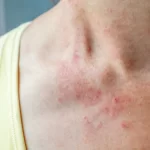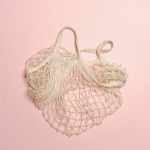Bees are important to human diet and nature too. More so, these stinging insects are most vital pollinators of nuts and fruits. They need nectar and pollen from flowers to reproduce and live. When it comes to the urban landscape, native plant communities and flowering plants have been replaced by roads, houses, and lawns. This has a negative effect on bees.
Luckily, you can create a bee-friendly landscape. Trees, fruits, flower gardens, vegetables, and shrubs can be important sources of pollen and nectar for native bees to live and produce honey. Bee-friendly landscapes enable bees to forage, rear their young ones, and build a nest. As humans, we also benefit from bees when we eat cucumbers, apples, pumpkins, blueberries, and other plants that depend on bees for pollination.
If you’re planning to create a bee-friendly landscape at home, there are several factors you should consider.
5 Rules for Creating Bee-Friendly Landscape
Learn the Seasonality of Bees and Plants
As a homeowner, you might be anxious to plant a bee garden. But you should have ideas on what to plant. Remember, bees will need nectar and pollen throughout the year. It means your flower garden should have plants with sugary nectar which offers bees energy and pollen-rich in protein to feed their young ones. To make this happen, plant at least three types of flowers to ensure blooms throughout the year.
Have plants such as calendula, foxglove, borage, wild lilac, and crocus which provide exciting spring blooms. For summer, cosmos, hosta, bee balm, and Echinacea will take care of your bees. When it comes to fall, ensure your bee garden is flooded with asters, goldenrod, sedum, and zinnias. Furthermore, you can leave a patch in the garden in a sunny spot for native bees that burrow.
Give Structure to the Garden
When you’re creating a bee-friendly landscape, ensure the plants are arranged in a way you can observe bees with ease. A well-planned garden will help you observe the visiting bees. You can plant smaller or shorter plants on the front and taller shrubs or plants at the back. Primarily, bees love being quite high. So, you can place hives on the taller plants and shrubs. However, ensure it’s not too high to enable you to harvest honey with ease.
Create a Regular Water Regime
Creating a bee-friendly landscape requires lots of watering regime, especially in summer. Watering during booming season enables plants to produce flowers for a prolonged period. A water-stressed plant won’t produce nectar and flowers, and the production of nectar declines. As a result, bees lack nectar to feed on.
Avoid Using Pesticides
Insecticides are considered more toxic to honeybees than herbicides and fungicides. Bees are dying due to the assault from climate change, habitat destruction, and pesticides. By applying pesticides to your bee landscape, it will kill the yellow insect and bugs will visit your garden. To take care of the plants and flowers in the bee garden, you can opt to use organic methods like spraying with water, hand-picking, or by using natural insecticides. Consult your local garden expert to learn more about the best pesticide to use.
Bees Need Water and Food
Succinctly, bees need water and food to survive. They rarely store water, but they need it. So, ensure you provide fresh water continuously. Bees use water for:
- Cooling – During summer, bees use water for evaporative cooling. It’s similar to air conditioners designed for humans. The bees have a unique way of spreading thin film water to cool themselves.
- Utilize Stored Food – Water is needed to dilute stored crystalized honey. Bees also need water to dissolve sugar if the owner has been feeding them with dried sugar. Without fresh water, bees cannot access these food sources.
- Humidity – Water is needed to control the humidity of the colony.
- Larvae Food – There is a nurse bee who feeds the developing larvae. Nurse bee consumes large amounts of nectar, pollen, and water to produce large quantities of hypopharyngeal glands that are used in feeding larvae.
Bees Need Cover
Ensure you provide a myriad of accommodating sites for bees. Have uncultivated patch for bees that burrow. Build a nest block or hang dried hollow sunflower stems for native bees. The chances are that if you have shrubs or trees in your yard, bees will hive there.
Bee-ing Friendly to Bees
Bees are the chief pollinators in every nut, crop, and fruits. Although bees depend on nectar and pollen, human beings also depend on bees. The heavy reliance on noxious herbicides and pesticides has weakened bee population across the globe. This makes it important to support local honey producers and to help bees out any way you can. Grab this chance and create a friendly bee environment and enjoy the buzz!











